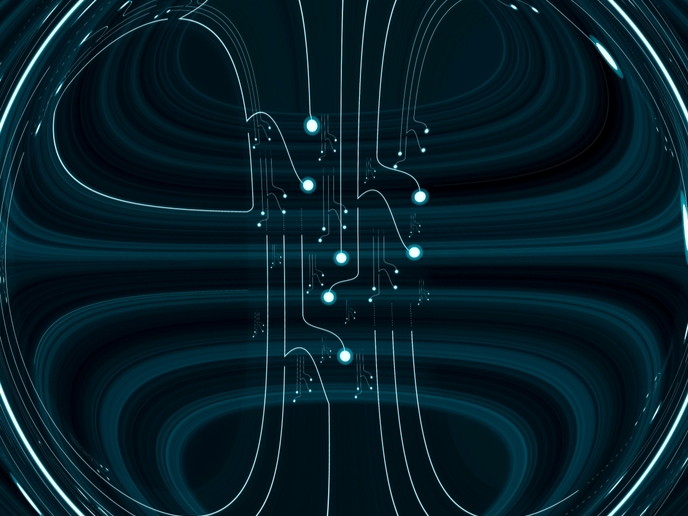A bridging device for coupling quantum circuits to mechanical devices
Optomechanics is a branch of physics in which microwaves detect and control the position of mechanical resonators(opens in new window) or oscillators, at the quantum level, meaning researchers can both ‘hear’ quantum fluctuations and programme quantum states. “This gives us an opportunity to explore uncharted territory – the quantum superposition of ‘heavy’ objects. Quantum superpositions, where different quantum states are combined, are well established for ‘light’ things like atoms, photons or single electrons, but have remained elusive for the heavier things of the classical physics world,” explains Gary Steele, project coordinator of the QOM3D project, which was funded by the European Research Council(opens in new window). QOM3D’s ‘flipped’ membrane chip design of an oscillator capable of exploring gravitational effects achieved an ultra-high quality factor(opens in new window) of 60 million. The team also developed new techniques for using superconducting qubits, or quantum bits, to cool and create radio frequency quantum states.
Brownian motion
According to Brownian motion of thermal energy(opens in new window), our world is hot. Consequently, all objects vibrate, including mechanical ones, as air molecules continually bounce off them. These motions can be detected using the sensitive tools of optomechanics, even when the target object is cooled to 10 millidegrees above absolute zero Kelvin (-273.16 ⁰C, 0 K), known as the ‘ground state’(opens in new window). According to classical physics, Brownian motion stops at zero Kelvin. But one of the most spectacular predictions of quantum mechanics is that even here, things still vibrate, due to ‘quantum noise’. One of QOM3D’s goals was to find evidence for this.
Bridging the frequency gap
QOM3D’s oscillators were effectively tiny vibrating mechanical drums formed of a tightly stretched membrane. A metal layer was coated on top of the drum, then it was flipped upside down onto another chip. Placed in a special device known as a resonant cavity, this superconducting LC circuit(opens in new window) can couple to the drum’s mechanical vibrations allowing the cavity to capture the microwave signals emitted from the LC circuit. The coupling will permit researchers to use the microwave signals to detect, and ultimately control at the quantum level, the vibrations of the drum. For the control of quantum states, QOM3D experimented with superconducting qubit technology developed for quantum computing. “Our radical design looked nothing like usual qubits, but we got spectacular results(opens in new window),” adds Steele. Before being able to control a mechanical device at the quantum level, a significant challenge would first have to be overcome – a phenomenon known as the ‘frequency gap’. As qubits operate at electromagnetic gigahertz (GHz) frequencies and the mechanical drum at megahertz (MHz) radio frequencies, a bridge is needed between the two to achieve coupling. The team experimented with coupling GHz qubits to electrical circuits which operate at the same MHz frequencies as the drums. They observed quantum fluctuations at MHz frequencies and were also able to cool MHz signals to their quantum ground state and programme quantum superposition states in the MHz oscillations, evidencing the existence of quantum noise. “Our proof of concept device’s strong coupling of qubits to the MHz electrical devices, shows promise for linking quantum circuits and mechanical devices in the future,” remarks Steele. “This is exciting for a range of applications, such as nuclear magnetic resonance or magnetic resonance imaging, or for hypersensitive quantum sensors which could, for example, measure quantum gravitational fields.” This last possibility would open the door to exploring a fundamental problem with our current understanding of the laws of nature: the incompatibility of quantum mechanics with Einstein’s theory of general relativity, which describes gravity.







